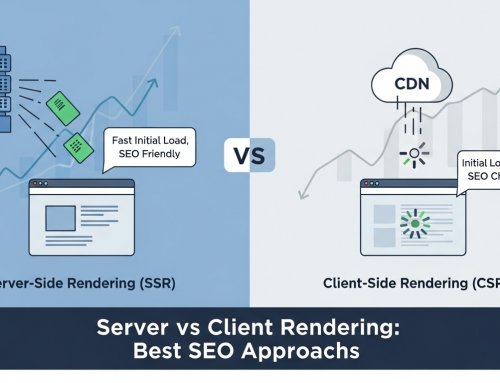Introduction
In today’s highly competitive digital landscape, achieving and maintaining high keyword rankings is crucial for any successful SEO campaign. Your website’s visibility on search engines like Google directly impacts the amount of organic traffic you can drive to your site. High-ranking keywords not only lead to increased exposure but also enhance your chances of attracting qualified leads and converting them into customers. Without an effective strategy in place, your content might get lost among the millions of pages vying for attention online, making it essential to optimize consistently.
However, boosting keyword rankings requires more than just adding a few keywords to your content. Search engines have become smarter, relying on complex algorithms that evaluate various factors such as relevance, user experience, content quality, and technical performance. To truly thrive in this environment, it’s necessary to adopt proven strategies that combine technical SEO, on-page optimization, content creation, and link-building tactics. In this guide, we’ll walk you through actionable strategies that can significantly enhance your keyword rankings and help you dominate the search results.
Understanding Keyword Rankings
Keyword rankings refer to the position of your website’s pages in search engine results for specific search terms or phrases. Achieving high rankings is crucial because users tend to click on the top results, making these positions highly coveted. The factors that influence keyword rankings are multifaceted, including on-page elements like keyword usage and content quality, as well as off-page factors such as backlinks and social signals.
The primary goal of SEO is to improve these rankings by aligning your content with what users are searching for. This involves understanding the intent behind keywords—whether users are looking for information, seeking to make a purchase, or needing a specific service. Effective keyword research helps identify these terms and their variations, allowing you to target them strategically. By focusing on relevant keywords and optimizing your website accordingly, you can increase your visibility and attract more targeted traffic, ultimately driving better results for your SEO campaigns.
1. Conduct Thorough Keyword Research
Conducting thorough keyword research is the foundation of a successful SEO strategy. The right keywords act as the bridge between your content and your target audience. Selecting keywords that accurately reflect what users are searching for can significantly impact your site’s visibility and traffic. Keywords are not just random words but carefully chosen terms that align with your content and the needs of your audience.
To identify the best keywords, leveraging tools like Google Keyword Planner, Ahrefs, and SEMrush is essential. Google Keyword Planner helps you discover keyword ideas and understand search volume, competition, and trends. Ahrefs and SEMrush provide comprehensive insights into keyword performance, competition analysis, and related keyword suggestions, offering a more detailed view of how different keywords might perform.
When it comes to keyword targeting, it’s crucial to understand the difference between long-tail and short-tail keywords. Short-tail keywords are broad and highly competitive, such as “SEO,” while long-tail keywords are more specific and often less competitive, like “how to improve keyword rankings for small businesses.” Long-tail keywords usually attract more qualified traffic, as they cater to specific queries and indicate a clearer search intent.
Identifying the search intent behind keywords—whether users are looking for information, trying to make a purchase, or seeking a specific service—can further refine your strategy. By understanding and targeting the right keywords, you ensure that your content meets the needs of your audience, improving your chances of ranking higher and driving relevant traffic to your site.
2. Optimize On-Page SEO
On-page SEO is a critical aspect of boosting keyword rankings and improving your website’s visibility in search engines. It involves optimizing individual web pages to rank higher and attract more relevant traffic. By fine-tuning various elements on your pages, you ensure that they are aligned with both user intent and search engine algorithms.
One of the first areas to focus on is crafting SEO-friendly title tags and meta descriptions. The title tag is one of the most important on-page SEO elements, as it directly affects your page’s relevance and click-through rate. Make sure your title tags are concise, include your primary keyword, and accurately reflect the content of the page. Similarly, write compelling meta descriptions that entice users to click through to your site, incorporating relevant keywords while clearly describing the page’s content.
Headers (H1, H2, H3, etc.) are another vital component of on-page SEO. They help organize your content, making it more readable for both users and search engines. Ensure that your primary keyword appears in the H1 tag, and use H2 and H3 tags to structure your content effectively. This not only improves user experience but also signals to search engines the main topics of your content.
Keyword placement and density are also crucial. While it’s important to incorporate keywords naturally within your content, avoid keyword stuffing, which can lead to penalties. Use primary and secondary keywords throughout your content in a way that maintains readability and relevance. Additionally, optimize images by including descriptive alt text and file names, which can also help improve your rankings and provide context for search engines.
3. Create High-Quality, Keyword-Rich Content
Creating high-quality, keyword-rich content is fundamental to improving your keyword rankings and driving organic traffic to your site. Content is the backbone of SEO, and search engines prioritize pages that offer valuable, relevant, and well-structured information to users. To effectively boost your rankings, focus on crafting content that not only incorporates keywords but also provides genuine value.
Start by producing content that is informative, engaging, and useful to your target audience. Address common questions, solve problems, and provide insights that resonate with your readers. High-quality content is more likely to be shared and linked to by other websites, which can improve your domain authority and rankings. Ensure that your content is well-researched, thoroughly edited, and presented in a clear and organized manner.
Incorporate your primary and secondary keywords naturally within your content to signal relevance to search engines. Avoid keyword stuffing, which can harm readability and lead to penalties. Instead, focus on integrating keywords in a way that flows naturally and enhances the overall quality of the content. Use variations and related terms to cover a broader range of search queries and provide a more comprehensive resource for your audience.
Regularly updating and expanding your content is also crucial. Search engines favor fresh and relevant content, so revisiting and revising older posts can help maintain or improve your rankings. Add new information, update statistics, and refresh your keywords to keep your content aligned with current trends and search behaviors.
Additionally, optimize multimedia elements such as images, videos, and infographics by including descriptive file names and alt text. These elements can enhance user engagement and provide additional context for search engines.
4. Focus on Technical SEO
Technical SEO is a crucial aspect of optimizing your website to ensure that search engines can effectively crawl, index, and rank your content. While on-page and off-page SEO are important, technical SEO addresses the underlying infrastructure of your site, impacting how search engines interact with it. Proper technical optimization can significantly enhance your keyword rankings and overall search visibility.
One of the primary elements of technical SEO is website speed. Fast-loading pages improve user experience and are favored by search engines. Tools like Google PageSpeed Insights or GTmetrix can help analyze your site’s performance and provide recommendations for improving load times. Optimizing images, leveraging browser caching, and minimizing HTTP requests are common strategies to boost page speed.
Mobile-friendliness is another critical factor. With the increasing use of mobile devices for browsing, search engines prioritize mobile-responsive websites. Ensure your site is designed to be easily navigable on smartphones and tablets. Google’s Mobile-Friendly Test can assess how well your site performs on mobile devices and highlight areas for improvement.
Utilizing schema markup can also enhance your site’s visibility in search results. Schema markup is a type of structured data that helps search engines understand the context of your content, potentially leading to rich snippets or enhanced search results. Implementing schema for products, reviews, events, and other relevant content types can improve how your information is displayed in search results.
Another important aspect is ensuring proper site indexing and crawling. Create and submit an XML sitemap to search engines, which provides a roadmap of your site’s structure. Use a robots.txt file to manage which pages search engines should or shouldn’t crawl. Regularly monitor your site for crawl errors using tools like Google Search Console, and address any issues promptly.
Additionally, address issues like duplicate content and broken links. Duplicate content can confuse search engines and negatively impact rankings, so use canonical tags to indicate the preferred version of a page. Regularly check for and fix broken links to ensure a seamless user experience and maintain your site’s credibility.
5. Improve Backlink Profile
A strong backlink profile is essential for boosting your keyword rankings and establishing your website’s authority. Backlinks, or inbound links, are links from other websites pointing to your site. Search engines view these links as endorsements of your content, and high-quality backlinks can significantly enhance your site’s credibility and ranking potential.
To improve your backlink profile, start by focusing on acquiring high-quality, relevant links from reputable sources. Quality outweighs quantity in backlink building. Links from authoritative websites within your industry are more valuable than numerous links from low-quality sites. Aim to earn backlinks from well-regarded publications, industry blogs, and trusted websites. This signals to search engines that your content is valuable and trustworthy.
One effective strategy for acquiring high-quality backlinks is through content outreach and guest blogging. Create compelling, valuable content that other sites will want to link to. Reach out to industry influencers, bloggers, and relevant publications with personalized pitches, offering your content as a resource. Guest blogging on reputable sites can also provide opportunities to include backlinks to your site within the content or author bio.
Another strategy is to leverage partnerships and collaborations. Building relationships with other businesses or influencers in your industry can lead to mutual backlinking opportunities. For example, co-authoring content or participating in industry-related events can result in natural, high-quality backlinks.
Regularly conduct a backlink audit to evaluate your existing backlinks. Tools like Ahrefs and SEMrush can help you analyze your backlink profile, identifying toxic or low-quality links that may harm your rankings. Disavow harmful links using Google’s Disavow Tool to ensure they do not negatively impact your site’s authority.
Additionally, monitor your competitors’ backlink profiles to identify potential link-building opportunities. Analyze where they are getting their backlinks and consider how you might earn similar links or create content that attracts similar attention.
6. Utilize Local SEO (If Applicable)
Local SEO is crucial for businesses aiming to attract customers in specific geographic areas. Optimizing for local search helps improve your visibility in location-based searches, making it easier for nearby customers to find your business. This is particularly important for businesses with physical locations or those targeting local markets.
Start by optimizing your Google My Business (GMB) listing. Ensure your business information is accurate, including your name, address, phone number, and operating hours. Add high-quality images and encourage satisfied customers to leave reviews, as positive feedback can boost your local credibility.
Incorporate localized keywords into your website content, meta descriptions, and title tags. For example, instead of just “plumbing services,” use “plumbing services in [City Name].” This helps search engines understand your relevance to local searches.
Build local citations by listing your business in local directories and industry-specific websites. Consistent and accurate information across these citations reinforces your local presence and can improve your search rankings.
Additionally, create content that resonates with local interests or events. Blog posts, news updates, or community involvement can engage local audiences and enhance your relevance in local search results.
7. Enhance User Experience (UX)
Enhancing user experience (UX) is essential for improving keyword rankings and ensuring that visitors have a positive interaction with your website. Search engines increasingly prioritize user experience as a ranking factor, meaning that sites offering a superior UX are more likely to achieve higher rankings and retain visitors.
Begin by ensuring your website is easy to navigate. A clear, intuitive layout helps users find what they’re looking for quickly and efficiently. Implement a logical menu structure and use internal linking to guide users to relevant content. This not only improves UX but also helps search engines understand your site’s hierarchy.
Optimize your site for mobile devices. With more users accessing websites on smartphones and tablets, a mobile-friendly design is crucial. Ensure that your site is responsive and functions well across various screen sizes. Tools like Google’s Mobile-Friendly Test can help identify any issues and provide recommendations for improvement.
Page load speed is another critical UX factor. Slow-loading pages can frustrate users and lead to higher bounce rates. Use tools such as Google PageSpeed Insights to analyze and enhance your site’s speed. Techniques like optimizing images, leveraging browser caching, and minimizing server response times can significantly improve load times.
Ensure that your content is easy to read and engaging. Use clear headings, bullet points, and concise paragraphs to make your content more scannable. Incorporate visual elements such as images and videos to break up text and enhance user engagement.
8. Leverage Social Media Signals
Leveraging social media signals can significantly impact your SEO efforts and keyword rankings. While social media itself is not a direct ranking factor for search engines, the signals and interactions it generates can enhance your overall online presence and influence search visibility.
Start by promoting your content across various social media platforms to drive traffic to your website. Share blog posts, articles, and other valuable content to engage your audience and encourage them to visit your site. Increased social media traffic can lead to higher user engagement metrics, such as longer dwell times and lower bounce rates, which are favorable for SEO.
Encourage social sharing by creating shareable content. Infographics, videos, and compelling posts that resonate with your audience are more likely to be shared, increasing their reach and visibility. The more your content is shared, the more likely it is to attract backlinks from other sites, further boosting your SEO efforts.
Engage with your audience on social media by responding to comments, participating in discussions, and fostering a community around your brand. Building a strong social presence can enhance your brand’s credibility and authority, indirectly supporting your SEO goals.
Monitor social media analytics to gain insights into which content performs best and resonates most with your audience. Use this data to refine your content strategy and focus on topics that drive the most engagement.
9. Optimize for Voice Search
Optimizing for voice search is becoming increasingly important as the use of voice-activated devices and virtual assistants grows. Voice search changes the way people search for information, often using natural language and longer, more conversational queries. Adapting your SEO strategy to accommodate these changes can help improve your visibility and rankings in voice search results.
Start by focusing on natural language and conversational keywords. Voice searches tend to be longer and more specific than text-based searches. For example, instead of searching for “best pizza places,” a voice search might be “What are the best pizza places near me?” Incorporate these longer, question-based phrases into your content to align with how users speak when using voice search.
Optimize your content to answer common questions. Create FAQ sections or dedicated pages that address frequently asked questions in a clear and concise manner. Structure your content in a way that directly answers these queries, making it more likely to be featured as a snippet in voice search results.
Ensure your website is mobile-friendly and has fast loading speeds. Voice searches are often conducted on mobile devices, so a responsive design and quick load times are essential for a good user experience. Use tools like Google’s Mobile-Friendly Test to verify that your site performs well on mobile devices.
Implement structured data markup (schema) to help search engines understand and categorize your content better. Structured data can enhance your visibility in search results by providing additional context and making it easier for search engines to display your content in voice search results.
10. Monitor and Adjust Keyword Performance
Monitoring and adjusting keyword performance is crucial for maintaining and improving your SEO strategy over time. Search engines and user behaviors are constantly evolving, so regular analysis and adjustments ensure that your keyword strategy remains effective and aligned with your goals.
Start by using analytics tools such as Google Analytics and Google Search Console to track the performance of your keywords. These tools provide insights into which keywords are driving traffic to your site, how well your pages are ranking, and how users are interacting with your content. Analyze metrics such as impressions, clicks, click-through rates (CTR), and conversion rates to evaluate the effectiveness of your keywords.
Regularly review and refine your keyword list based on performance data. Identify high-performing keywords that are driving significant traffic and conversions, and focus on optimizing content around these terms. Conversely, recognize underperforming keywords and determine whether they need adjustment or replacement. This might involve revising content, changing keyword targeting, or exploring new keyword opportunities.
Keep an eye on keyword trends and changes in search behavior. Use tools like Google Trends to stay informed about emerging trends and adjust your strategy to capitalize on new opportunities. Adapting to these changes can help you maintain a competitive edge and ensure that your content remains relevant to current search trends.
Regularly update your content to reflect keyword performance insights. Refreshing old content with updated keywords and information can boost its relevance and rankings. Also, consider adding new content to address gaps identified through keyword analysis, ensuring a comprehensive approach to your SEO strategy.
11. Use AI and Automation Tools for SEO
Leveraging AI and automation tools can greatly enhance your SEO efforts, making it more efficient to manage, analyze, and optimize your SEO strategy. These advanced technologies help streamline various aspects of SEO, from keyword research to content creation and performance tracking.
AI-powered tools offer advanced keyword research capabilities by analyzing vast amounts of data to identify high-performing keywords and emerging trends. Tools like Clearscope and MarketMuse use AI to provide keyword suggestions and content optimization recommendations, helping you create content that ranks higher and resonates with your target audience.
Automation tools can simplify repetitive SEO tasks such as site audits, reporting, and backlink tracking. Platforms like SEMrush and Ahrefs offer automated site audits that identify technical issues, broken links, and opportunities for improvement. Automated reporting features can generate detailed SEO reports on a regular basis, saving time and providing insights into your site’s performance.
AI-driven content creation tools can assist in generating high-quality content quickly. Tools like Jasper and Copy.ai use natural language processing to draft content, create variations, and optimize it for SEO. While these tools can help with content creation, it’s essential to review and refine the output to ensure it aligns with your brand voice and provides value to your audience.
Additionally, AI can enhance user experience through personalized content recommendations. Tools like Optimizely use machine learning to analyze user behavior and deliver tailored content suggestions, improving engagement and conversion rates.
Conclusion
Implementing proven strategies to boost keyword rankings involves a comprehensive approach, from conducting thorough keyword research to leveraging AI tools. By optimizing on-page elements, creating high-quality content, and focusing on technical SEO, you enhance your website’s visibility and relevance. Local SEO and social media signals further bolster your efforts, while adapting to voice search and continuously monitoring keyword performance ensures long-term success. Utilizing AI and automation tools can streamline your processes and provide valuable insights. Embracing these strategies not only improves your rankings but also drives targeted traffic, enhances user experience, and supports overall SEO success.






